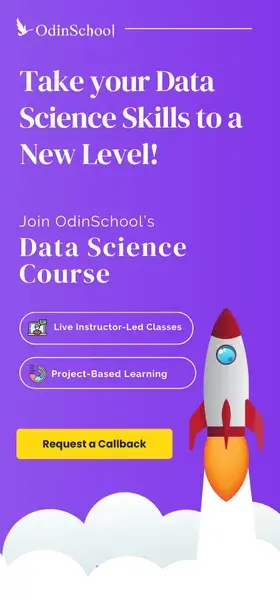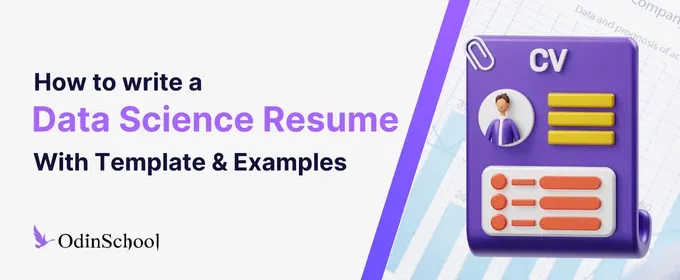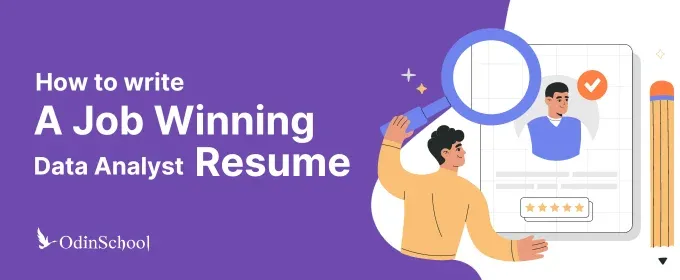The difference between a Resume and a Curriculum Vitae | OdinSchool
Summary
This blog delves into the often misunderstood distinction between a CV and a resume, shedding light on their unique roles in the job-seeking process. It highlights the prevalence of confusion even among professionals about these terms. The article explores the attributes of both documents, emphasizing their importance and when to use each. It provides practical insights on crafting a compelling CV and resume, offering guidance on format, content, and customization. The blog concludes by advocating the benefits of having both a CV and a resume in your toolkit, as different job opportunities may call for one or the other.
Table of Content
The list of questions relating to a resume and CV is widespread and for a good reason. It is because both tools have a striking resemblance, but they are different. Many people, including professionals and industry experts, do not know the difference between a CV and a resume.
Put the question across to a professional community, and only a few will answer correctly - what is a CV? What is curriculum vitae? And what is a resume? In other words, merely a small percentage of respondents will be able to tell what the difference is between a resume and a CV.
Nonetheless, whether you’re a big data developer or a data analyst with excel knowledge who is seeking a data analytics job, you need these documents. But the lack of understanding has raised several questions regarding CV vs. resume, with many wondering a resume or CV, is more important for job seekers.
However, the good news is that in this article, you will learn:
- What each of these terms represents
- How a resume compares to a CV
- Their importance or why you should have one or both.
Hence, to differential CV versus resume, let’s start with:
What is a CV?
The subheadline appears questionable but isn’t. That’s because both titles have the same meaning. A CV is a shortened word for curriculum vitae. So instead of using the term “curriculum vitae, it is often mentioned by its shortened abbreviation - CV.
Nonetheless, in presenting the definition of a CV, it denotes a comprehensive document that is typically one page or two pages in length. It covers a person’s accomplishments, including education and professional experience.
Put differently, a curriculum vitae (CV) is a written document or synopsis of a person’s core skills, work experience, and other essential details. You can use this document for different purposes, but usually when applying for a new job.
But you may be wondering, how can I write an impressive CV?
How to write a CV?
When writing your CV, it should be precise to your professional background and customized to the job you're applying. Given this, there are many ways to create a compelling CV. First, choose a CV layout that aligns with your desired job position.
Furthermore, since a CV and resume have similar patterns, ensure to pick a CV format that applies to your job search. After that, make sure to add all the components that will transform your document into a persuasive curriculum vitae.
What goes into a Curriculum Vitae (CV)?
Here are what to include:
- Contact information
- Educational background
- Professional experience
- Publications
- Presentations
- Volunteer work
- Affiliations
- Qualifications and skills
- Awards and honors
- Grants and fellowships
- Licenses
- Certifications
It is crucial to know how to write a powerful CV because some institutions may provide you with examples of CVs, CV templates, and CV guidelines. Why? They want to ensure that your document complies with their preferred format without missing any detail.
In consequence, search for and comply with any applicable guidelines before submitting your CV. The best way is to create a CV template on Word doc or Google docs, which you can quickly tweak for maximum results.
Why is a good CV important when applying for a job?
Like any other marketing tactic, your goal is to impress customers and find new consumers. Similarly, an excellent curriculum vitae is vital because it helps you impress industry recruiters.
It is a marketing tool that lets you market yourself and core skills to potential employers. Why is that so? Because presentation is key to your success. So your CV reveals your strength, expertise, and years of working experience to the most relevant job recruiters.
Also, it is a direct way to tell employers that you’re most qualified for the job. Now that we understand a CV definition and usage let us grasp the definition of resume and why you need it.
What is a Resume?
Similar to a CV, a résumé or resume is a compact document that offers a general idea of your focus skills, work experience, and education. Employment seekers would create a résumé that provides an overview of their experience and background, which they can submit to recruiters.
And just like a CV, you can use a resume for different reasons. But topmost of all is to find new jobs. So by submitting your résumés to employment recruiters, you are showing them your most vital skills of concentration, your work experience, and of course, your level of education.
And if your resume is convincing enough, it will persuade employers to hire you.
How to write a Resume?
Please, note that how to write an effective resume encompasses how to write a resume objective. It is also not how to write a resume summary. The latter two are an extension of a comprehensive resume statement. For example, a resume objective establishes your career targets, such as what jobs or job titles you aim to achieve.
It reveals your future goals in terms of where you aspire to reach with your career. However, many use them interchangeably because they’re not aware of the differences between a resume for job-seeking purposes and a resume for career objectives.
Therefore, here’s how to write a resume:
If you already have resume templates on Word doc, then it will be more comfortable and quicker to create a fantastic resume in the shortest time. Nevertheless, since resumes are a shorter version of CV and the most requested document, you should make it brief.
For this reason, follow the steps below and add all that should go into a resume. Create a resume that will attract much interest to you from recruiters. It should be like a graduation speech that generates a standing ovation.
What to include in a Resume?
Here are the following elements to include when writing your resume. After selecting your ideal resume template, you need to:
- Enter your personal information, including contact details
- Use a resume summary to strengthen your application. You can find resume summary examples and resume summary statements on the internet for inspiration.
- Add a resume objective (optional). If you’re not sure what it looks like, search Google to find examples of resume objective, and resume objective statements.
- Outline your work experience
- Include your achievements (if any)
- List your major skills
- Device a compelling cover letter that will go together with your resume. The best practice is to create a cover letter template for use. With your model template, you can make a few adjustments to fit your every need.
- Re-evaluate your resume, and proofread it before you submit them. You need a cover letter because, in most cases, a resume with a cover letter works hand-in-hand.
Having a resume template allows me to adjust my document a little if necessary, depending on the type of job I want to apply for. You can use this example to create yours. However, make sure to optimize your resume for the best results. Have a look at an optimized resume from the OdinSchool blog below.
Why is a Resume important?
Your resume is your initial impression of who you are and what you can do for the company to help grow its business. So your resume is essential because you can use it to convey the best picture of your expertise and experience and get hired.
Consequently, recruiters will likely call you up for interviews since you have already impressed your abilities on them. Hence, one can rightly say that a resume is a critical tool for getting hired.
So let us summarize the differences in plain language:
The difference between a Resume and a CV
The significant difference between a resume and a CV is that CVs are more detailed and organized in ways that cover a person’s full education and career. And because they are longer than resumes, CVs can take up three pages with a consistent view.
Now you may ask: Why are CVs longer than resumes? Because these documents contain more comprehensive data about an individual’s educational background, including research projects, degrees, and other accomplishments.
As a result, the difference is tied in the length of the document. But for resumes, they are more concise and can take a page or at most two pages that give an overview of your critical skills and work experience.
Where to use a CV?
People use CVs to find jobs in the academic industry. It enables educational institutions to make a better assessment of your core managerial skills, including subject knowledge, and other essential areas befitting an educator or administrator.
A CV will enhance your chances of being hired in any academic institution. But your resume cannot help you in this regard.
Where to use a Resume?
Although you can also use a CV to obtain jobs in other sectors not related to academics, resumes are your best bet. For instance, employment in the digital marketing industry rarely demands a CV. They’ll instead ask you to provide your resume.
However, some of the employers in this industry will request it. So a well-crafted resume will put in the best position to find a new job in any other industry.
Should you have both documents - a CV and a Resume?
Now that you know the differences, you may be wondering which of the two business requirement documents should be in your possession. I recommend having the two since almost all jobs require either one, depending on the position or type.
The application forms will detail what the applicant must provide, which might be a CV or Resume. For example, the screenshot below shows that the Toptal content writer position requires applicants to submit a resume instead of a CV.
Fortunately, if you have your resume ready, you can comfortably submit it to recruiters and wait for further instructions.
But if, for some reason, you only need one document, then get a resume. It is brief and to the point, you want to highlight.
Wrapping up
Your resume or CV can make the difference between getting your desired job or not. So it doesn’t matter where you are; get your CV and resume handy. But before you submit your document, the human resource (HR) personnel ensure that you are turning in the right document for the job.





